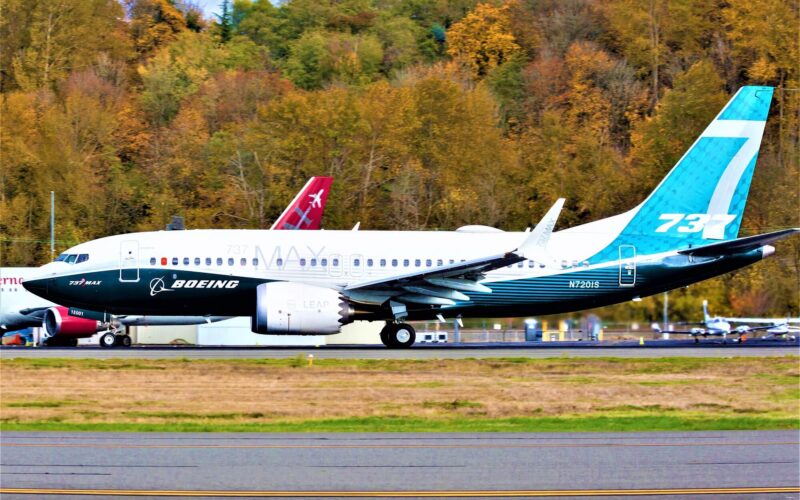The Federal Aviation Administration (FAA) told Boeing it has not completed safety tasks needed in order to certify the 737 MAX 7 by December 2022
According to a letter from the FAA dated September 19, 2022, seen by Reuters, the FAA shared concerns “about realistic timeframes for receiving the remaining documents” required to certify the aircraft.
The regulator had urged Boeing to submit the necessary system safety assessments (SSAs) by mid-September in order for the aircraft to be certified by December. However, the manufacturer has failed to meet the submission deadline.
“Just under 10% of the SSAs [system safety assessments, ed.-] have been accepted by the FAA and another 70% of these documents are in various stages of review and revision,” the FAA said in the letter.
“The most concerning, however, is that Boeing has yet to provide an initial submittal for six of the outstanding SSAs,” the FAA added, outlining that it will take time for the authority to review crucial safety-related documents.
The current deadline to win approval from the FAA of the 737 MAX 7 10 and the MAX 7, the smallest aircraft in the MAX family, is December 31, 2022. If the manufacturer fails to meet the deadline, it will need to equip both variants with a modernized flight crew alerting system to meet additional safety requirements as per the new Aircraft Certification, Safety and Accountability Act (ACSAA), which will be implemented on January 1, 2023.
The Boeing 737 MAX 7
The Boeing 737 MAX 7 took off on its maiden flight in March 2018. The jet’s entry into service was initially scheduled with Southwest Airlines (LUV) for early 2019. However, two fatal MAX crashes resulted in the global grounding of the aircraft.
However, the Boeing 737 MAX 7 was seen taking off on a few trial flights earlier in 2022 and is currently expected to be cleared for operation by US regulators by the end of the year.
The MAX 7 is the smallest member of Boeing’s upgraded narrow-body twin-engine jetliners. In comparison to its predecessor, the 737-700, the MAX 7 fits two additional rows. The aircraft can accommodate 12 more seats and can carry up to 153 passengers in a two-class configuration, with a maximum capacity of 172 seats.
The aircraft has a range of 3,850 nautical miles (7,130 km), which is the longest of all other 737 MAX family aircraft.
According to Boeing, the shortened 737 aircraft is designed to fly at high altitudes and in hot climates or on longer journeys than larger narrow-body jets.

